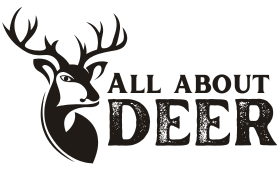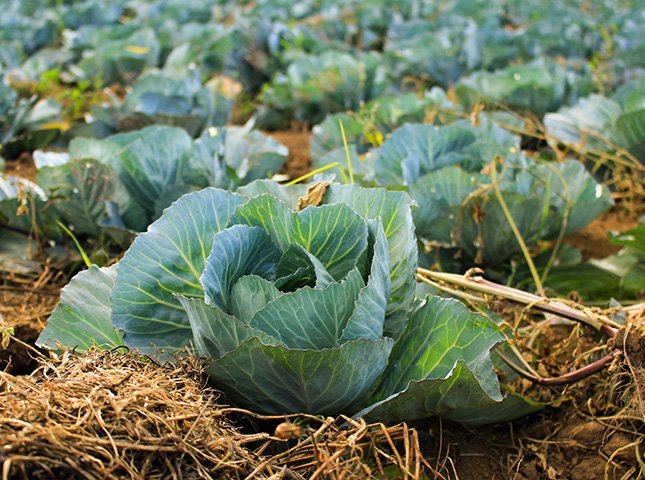Do deer like cabbage? Not a simple yes or no. Deer are herbivores and mostly eat plants like grass and leaves, but can take an interest in certain veggies like cabbage.
Cabbage is part of the Brassicaceae family, which contains veggies like broccoli and kale. These contain nutrients that deer benefit from. Cabbage fiber aids digestion and provides energy.
But, deer don’t search for cabbage. They go for crops like corn and soybeans that are higher in nutrition. If no other food source is available, deer may nibble on cabbage.
Sometimes gardeners have had their cabbage eaten by hungry deer. This shows the balance between nature and us.
In conclusion, deer don’t actively look for cabbage, but if it’s there they won’t pass it up. Gardeners should take precautions to protect their produce from these curious creatures.
Table of Contents
Understanding Deer’s Diet
To understand deer’s diet in relation to cabbage, delve into the sub-sections “What do deer typically eat?” and “Examining the potential for deer to eat cabbage.”
What do deer typically eat?
Deer are picky eaters! They mainly eat plants and foliage, but their diet changes with the seasons. Here are 6 facts about what deer typically eat:
- Tender grasses and young shoots give them essential nutrients.
- Leaves from maple, oak, and birch trees add variation.
- Fruits and berries are a summer/autumn treat.
- Corn and soybeans are occasional snacks.
- Winter food sources are twigs, bark, and buds.
- Deer develop preferences for certain plant species.
These unique details show how deer adapt their eating habits to the changing seasons. Also, did you know deer have a special stomach compartment called the “rumen”? This info comes from the Wildlife Management Institute!
Examining the potential for deer to eat cabbage
Deer and cabbage – do they mix? Can these animals really devour the leafy green goodness? Let’s explore.
It’s true that deer have been known to eat a variety of plants, but cabbage is not one of them. Its bitter taste and pungent odor put it at the bottom of their menu. That’s why farmers don’t worry about hungry deer eating their cabbages!
Studies show that certain cabbage varieties are less attractive to deer. For example, savoy cabbage with its crinkled leaves and strong flavor. On the other hand, mild-tasting cabbage types may catch their attention.
Surprisingly, research conducted by the Department of Agriculture suggests that deer are more likely to feed on young cabbage plants rather than mature ones. This is because young leaves are softer and easier for them to consume.
So while it is possible for deer to eat cabbage, it’s not their favorite meal. You won’t find a group of deer happily feasting on a field of cabbages.
Factors that influence a deer’s food choices
To better understand the factors that influence a deer’s food choices, delve into the section “Factors that influence a deer’s food choices” with a focus on the availability of natural food sources and seasonal preferences. Explore how these elements shape a deer’s selection of meals.
Availability of natural food sources
Deer have the ability to locate food in multiple environments. Natural sources like grasses, herbs, leaves, twigs, and fungi can influence their choices. These sources’ accessibility, plus their nutritional content, are decisive factors.
But, when natural sources become scarce or inaccessible due to inclement weather or human activity, deer may need to turn to alternative options. This includes crops and urban areas for sustenance.
Humans must consider how our activities can affect deer’s food sources. We must conserve habitats that provide essential nourishment. This helps maintain the balance influencing deer’s food choices.
So, let’s keep the peace by protecting and preserving deer habitats. Let’s make sure they have adequate food availability. Together, we can make a difference!
Seasonal preferences
Environmental factors can shape deer’s seasonal preferences. Temperature and precipitation levels can both affect the types of plants available for deer to feed on. To help them survive, providing supplementary food sources near their habitats is beneficial. Feeders and salt blocks can offer sustenance when natural options are limited. Creating or preserving diverse habitats also provides a variety of food choices. These alternative food sources can maintain healthy deer populations and support their ecological role as herbivores.
Understanding the relationship between seasonal preferences and a deer’s food choices is key to effective wildlife management. Considering natural fluctuations and implementing supplementary feeding strategies when necessary, we can support the well-being of individual animals and the overall balance of ecosystems they inhabit. Thus, recognizing and respecting these factors will help conservation efforts for these creatures.
Preventing deer from eating cabbage in your garden
To prevent deer from eating cabbage in your garden, employ fencing strategies, natural deterrents, and repellents and sprays. These solutions will help safeguard your precious cabbage plants from the voracious appetite of deer.
Fencing strategies
Gardeners can battle pesky deer eating their cabbage by using fencing strategies. A tall, sturdy fence they cannot jump or push through works great. An electric fence with a harmless shock can also be used. These strategies help safeguard your cabbage. To further protect, consider motion-activated sprinklers and shiny objects like foil or CDs near the cabbage. Make sure to inspect and maintain your fence regularly.
A study conducted by the University of Illinois Extension found that these methods reduced deer damage to gardens by up to 90%. This proves how effective fencing strategies are in protecting cabbage!
Natural deterrents
Planting repellent herbs can protect cabbage patches. Mint, lavender, and rosemary have strong scents which act as natural deterrents. They discourage deer from approaching.
Fences also help keep deer out. The height should be at least 8 feet, and dug into the ground. This stops them from digging underneath.
Motion-activated sprinklers startle deer by spraying water when they get too close. This surprises and deters them.
Combining repellents works best. Employ multiple natural deterrents to increase chances of preserving the cabbage patch.
History shows natural deterrents are effective for preserving crops. Gardeners witness how plants and boundaries work in defense against wildlife. We can balance harvests while coexisting with wildlife.
Repellents and sprays
For optimal results, spread repellents and sprays evenly over your cabbage garden. This creates a strong smell that deters deer from coming near. Reapply after rain, since water weakens the product’s effect.
Organic sprays with natural ingredients like garlic or rotten eggs are both eco-friendly and very smelly. Thus, they may work well in keeping deer away.
It varies depending on the local deer population and their habits. Try different alternatives to find what works best in your region.
Conclusion
Deer don’t usually go for cabbage. Its smell, taste, and texture make it unappetizing to them. So, they prefer other plants that are easier to eat.
Pro Tip: If you want to keep deer away from your cabbage, use fences or animal repellent.
Frequently Asked Questions
1. Do deer eat cabbage?
Yes, deer are known to eat cabbage. They are herbivores and will consume a variety of plants, including cabbage, if it is available to them.
2. Will my cabbage be safe from deer?
Deer have been known to damage cabbage crops. To protect your cabbage, you can use fencing or repellents specifically designed to deter deer. It is also helpful to plant other deer-resistant plants nearby to distract them from the cabbage.
3. Are there any natural ways to keep deer away from my cabbage?
Yes, there are several natural methods to deter deer from eating cabbage. Some options include planting strong-smelling herbs like mint or rosemary near your cabbage, using soap or human hair as a scent deterrent, or hanging shiny objects like CDs or aluminum foil strips to scare them away.
4. How high should a deer fence be to protect my cabbage?
A deer fence should ideally be at least 8 feet high to effectively keep deer away. This height reduces the risk of them jumping over the fence to reach your cabbage.
5. Can I use deer repellents on my cabbage?
Yes, there are deer repellents available in the market that can be sprayed on your cabbage plants. These repellents have strong odors that deter deer from approaching your crops.
6. Are there any other plants that deer tend to avoid?
Deer typically avoid plants with strong scents, textures, or tastes. Some commonly known deer-resistant plants include lavender, sage, thyme, marigolds, and daffodils. Planting them near your cabbage can help protect it from deer.


